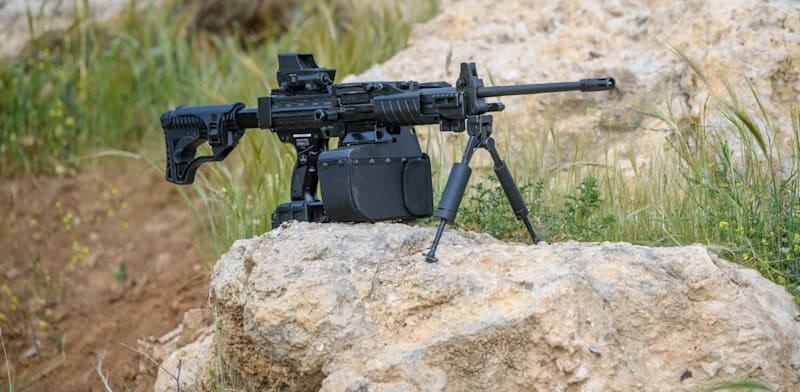Armenia’s Shift to Indian Su-30MKIs: A Strategic Move Amid Russian Aviation Delays

Armenia is signaling a decisive shift in its defense procurement strategy by turning to India for fighter jets, bypassing Russia’s Su-30SM Flanker-C aircraft after significant delays. The Armenian Ministry of Defense recently entered negotiations with Hindustan Aeronautics Limited (HAL), India's state-owned aerospace manufacturer, to secure Su-30MKI Flanker-H fighters. These negotiations highlight Armenia’s frustration with Russia, which has failed to deliver on a contract for eight additional Su-30SMs initially signed in 2019. Armenia’s potential pivot to India marks not only a shift in Armenia’s defense alliances but also highlights the growing appeal of Indian defense technology on the international stage.
The Backstory: Armenia’s Su-30SM Order and Russia’s Delays
In 2019, Armenia received four Russian Su-30SMs, but almost immediately sought to bolster its fleet with eight more. The initial deliveries met Armenia’s defense needs and appeared to strengthen ties between Armenia and Russia. However, the subsequent order for additional Su-30SMs has been stalled despite a 70% down payment. Russia, preoccupied with meeting its own military needs amid global pressures and conflicts, has left Armenia waiting with no aircraft produced. As Armenia’s patience wears thin, it now appears ready to break from Russia's orbit, turning to Indian-made alternatives that offer both quality and timely delivery.
Why the Su-30MKI?
India’s Su-30MKI is a highly customized variant of the Russian Su-30, developed in collaboration with Sukhoi but produced domestically by HAL. The Su-30MKI is equipped with several key upgrades, including the Indian-made Uttam Active Electronically Scanned Array (AESA) radar. The AESA radar provides significant improvements in target tracking and engagement capabilities over the traditional Russian radar systems used in the Su-30SM, offering Armenia a technological edge.
For Armenia, the move to Su-30MKIs would not only mean acquiring new aircraft but also upgrading the existing Su-30SM fleet to Indian specifications. The Armenian government is reportedly considering retrofitting its current Su-30SMs with the same Uttam AESA radar and other advanced features available in the Su-30MKI, transforming these older jets into competitive, modern fighters.
Weaponry to Match: India's Advanced Arsenal
India’s negotiation package for Armenia also includes access to several indigenous missile systems. The proposed deal would likely involve the Astra-1, India’s first domestically developed beyond-visual-range air-to-air missile. This weapon can engage targets at ranges of up to 110 km, providing Armenia with a long-range strike capability suited to both defense and deterrence.
Another significant addition would be the Rudram-1, an anti-radiation missile developed to target enemy radar and air defense systems. This could prove a game-changer for Armenia, enhancing its air force's ability to neutralize ground-based threats during combat. Finally, the Smart Anti-Airfield Weapon (SAAW), a precision-guided bomb designed for airfield denial missions, rounds out the weaponry package. Together, these systems would give Armenia a versatile and modern arsenal, enhancing its defense capabilities beyond what Russia’s offerings could currently provide.
Armenia’s Growing Defense Ties with India
This potential purchase is part of Armenia’s ongoing efforts to diversify its defense partnerships, particularly following the $2 billion defense cooperation deal signed with India in 2020. This partnership has already led to significant Armenian purchases of Indian-made weaponry, including Pinaka multi-barrel rocket launchers, artillery systems, and anti-tank weapons. Armenia’s pivot to India not only demonstrates India’s rising prominence in global defense but also highlights the gradual shift of former Russian allies toward alternate suppliers in light of delays and challenges within Russia's defense sector.
What Lies Ahead
While the final contract between Armenia and India has yet to be solidified, the potential deal underscores a changing landscape for international defense cooperation. For Russia, losing Armenia as a defense customer may be more than a financial setback; it could represent a waning influence in regions where it once held unchallenged dominance. For India, securing a deal to export the Su-30MKI would mark a milestone in its burgeoning defense export ambitions, showcasing its ability to meet global standards for quality and reliability in military aviation.
With negotiations ongoing, the emerging contract has already placed India on the radar as a significant player in the defense sector, particularly for countries looking to diversify away from traditional suppliers like Russia. The decision to align with India not only grants Armenia a modern and versatile air force but also signals the country's increasing autonomy and adaptability in response to evolving regional dynamics.


